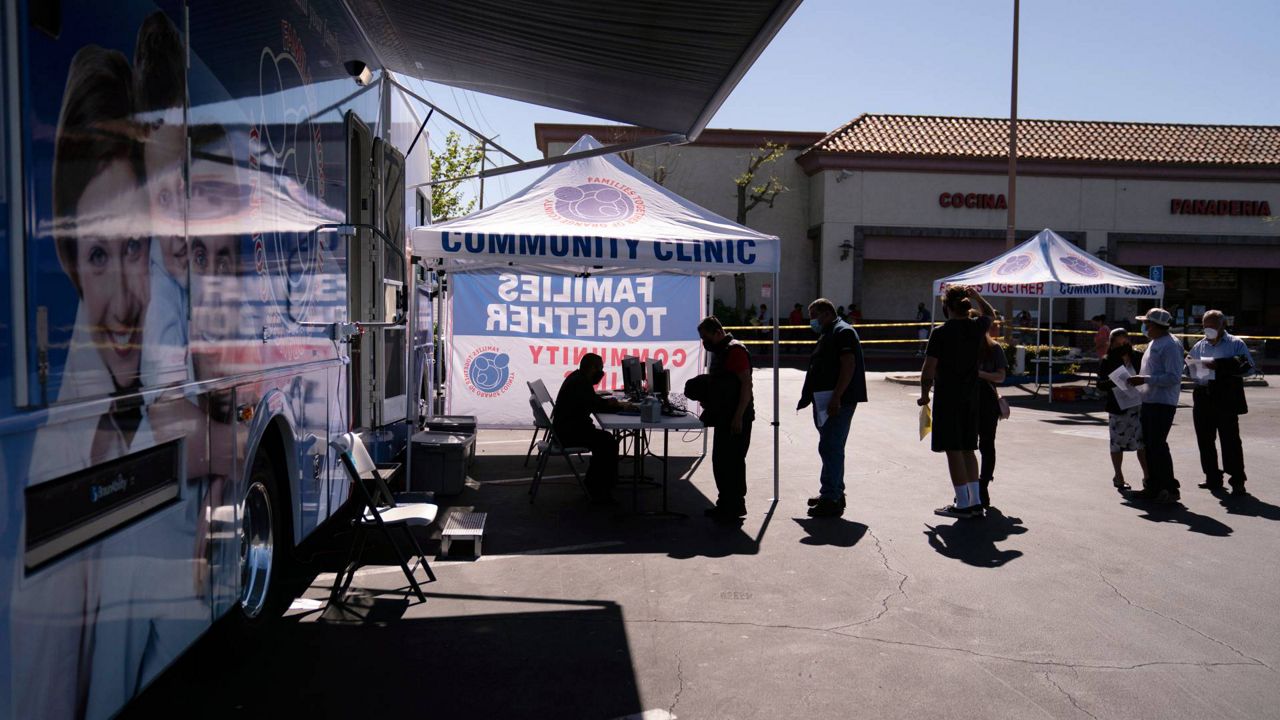SANTA ANA, Calif. (CNS) — Orange County's COVID-19 hospitalizations continued climbing Wednesday, reaching levels not seen in 11 months and pushing the county into the No. 2 spot in the state in COVID-positive patients, behind only Los Angeles County.
Hospitalizations swelled from 1,013 on Tuesday to 1,071 on Wednesday, with the number of intensive care unit patients rising from 159, according to the Orange County Health Care Agency.
What You Need To Know
- OC's COVID hospitalizations swelled from 1,013 on Tuesday to 1,071 on Wednesday
- The seven-day average for COVID cases per 100,000 people increased from 739 on Tuesday to 890.2
- The county logged three more COVID-related deaths on Wednesday with two last month and one in January of last year
- January 2021 remains the deadliest month of the pandemic with a death toll of 1,598
The county also logged a whopping 11,092 new positive COVID-19 tests Wednesday, increasing the cumulative total since the pandemic began to 413,978.
The seven-day average for COVID cases per 100,000 people increased from 739 on Tuesday to 890.2.
"You can look at the data in two different ways," Orange County CEO Frank Kim said. "We continue to see increases in daily positivity and case numbers, but that is also a function of increased testing. I also think that's underreported because so many individuals have access to rapid testing (at home)."
Kim also said it makes little difference whether the hospitalized patients are in for mainly COVID-19-related symptoms or if they are what's known as "incidental" cases of a patient hospitalized for another malady who happens to test positive for the virus.
"When you get into the large numbers you have today it really doesn't matter," Kim told City News Service. "It's the general trend you have to look at. The hospital numbers are climbing and they haven't slowed down yet so it's concerning."
The county has 19.3% of its ICU beds available and 64% of its ventilators. Of those hospitalized, 87% are unvaccinated and 88% in the ICU are not inoculated, according to OCHCA.
The county's adjusted daily case rate per 100,000 residents decreased from 108 Tuesday to 103 on Wednesday. The testing positivity rate inched up from 25.2% to 25.9%, and increased from 27% to 28.3% in the health equity quartile, which measures underserved communities hardest hit by the pandemic.
"It's hard to say when this will go down," Andrew Noymer, an epidemiologist and UC Irvine professor of population health and disease prevention, told City News Service on Tuesday.
"... I still don't think you need to hide in the basement, but people need to align their activity with their risk and the risk they pose to others. A year ago I said they should hide in their basement, particularly if they weren't vaccinated yet because a year ago they were ramping that up and real people were starting to get it not just healthcare workers. Now I think people can still go out, but ... if you're living with a great grandmother or you're immunocompromised for whatever reason then you need to realize there's still a pandemic raging."
The county is in much better shape than it would have been without vaccines, Noymer said. Also, the omicron variant appears to pose milder symptoms than previous variants, he added.
The Orange County Board of Supervisors on Tuesday mandated that county employees be given 40 more hours of sick leave so they will be encouraged to stay home when under the weather.
About 600 county employees, out of a total of about 17,000, have been infected since mid-December, Kim said. When an employee gets infected, they're out a minimum of five days given the need for quarantine. That can eat up all of a workers' sick leave so that they might be more inclined to show up for work with mild symptoms in the future, Kim said.
The county logged three more COVID-related deaths on Wednesday with two last month and one in January of last year.
The death toll for December is now 62. Deputy county health officer Dr. Regina Chinsio-Kwong said Friday that 50 of those who died in December were unvaccinated and seven were seniors.
November's death toll stands at 103. October's death toll stands at 127, with 196 for September and 182 for August.
In contrast, the death toll before the more contagious delta variant fueled a summer surge was 31 in July, 19 for June, 26 for May, 47 for April, 202 for March and 620 for February.
January 2021 remains the deadliest month of the pandemic with a death toll of 1,598, ahead of December 2020, the next deadliest with 985 people lost to the virus.
